Transport in plants
1/18
There's no tags or description
Looks like no tags are added yet.
Name | Mastery | Learn | Test | Matching | Spaced |
|---|
No study sessions yet.
19 Terms
Similarity of the structure of phloem and xylem (1 mark)
Both made up of vascular tissue
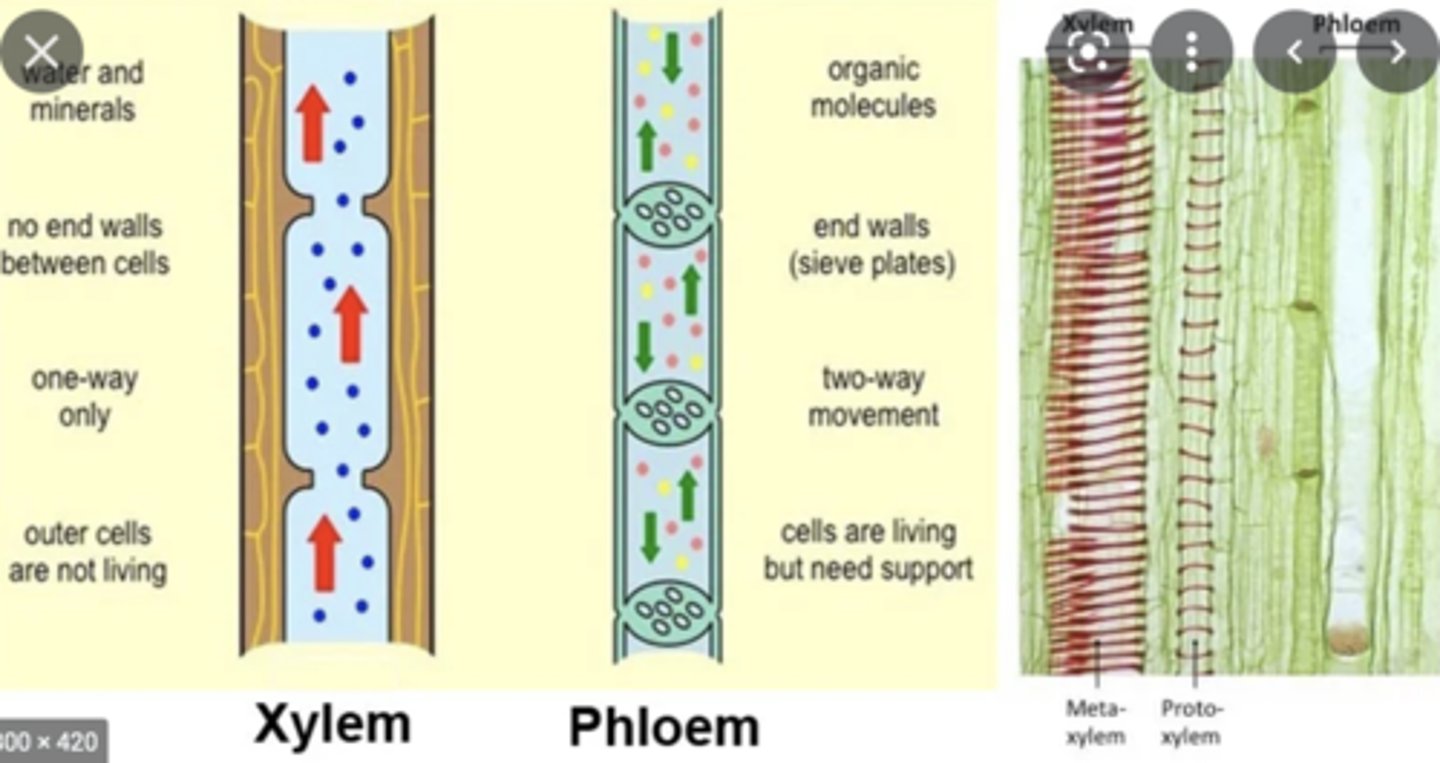
Two differences between structure of xylem and phloem (2 marks)
1. Xylem vessel is lignified, phloem is not
2. Xylem is non living
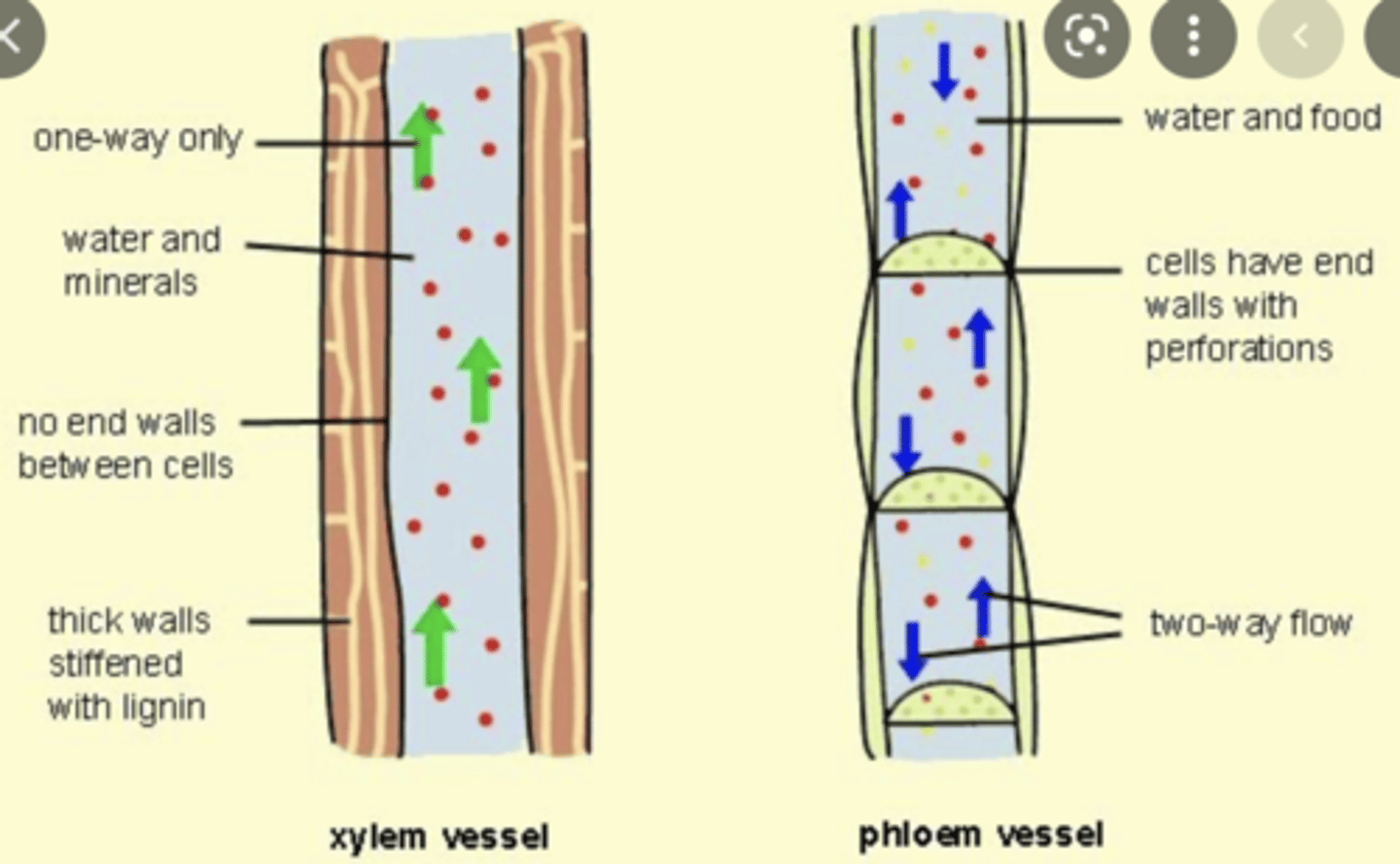
What is the strongest force which pulls water up the xylem and into leaf (1 mark)
Transpiration pull
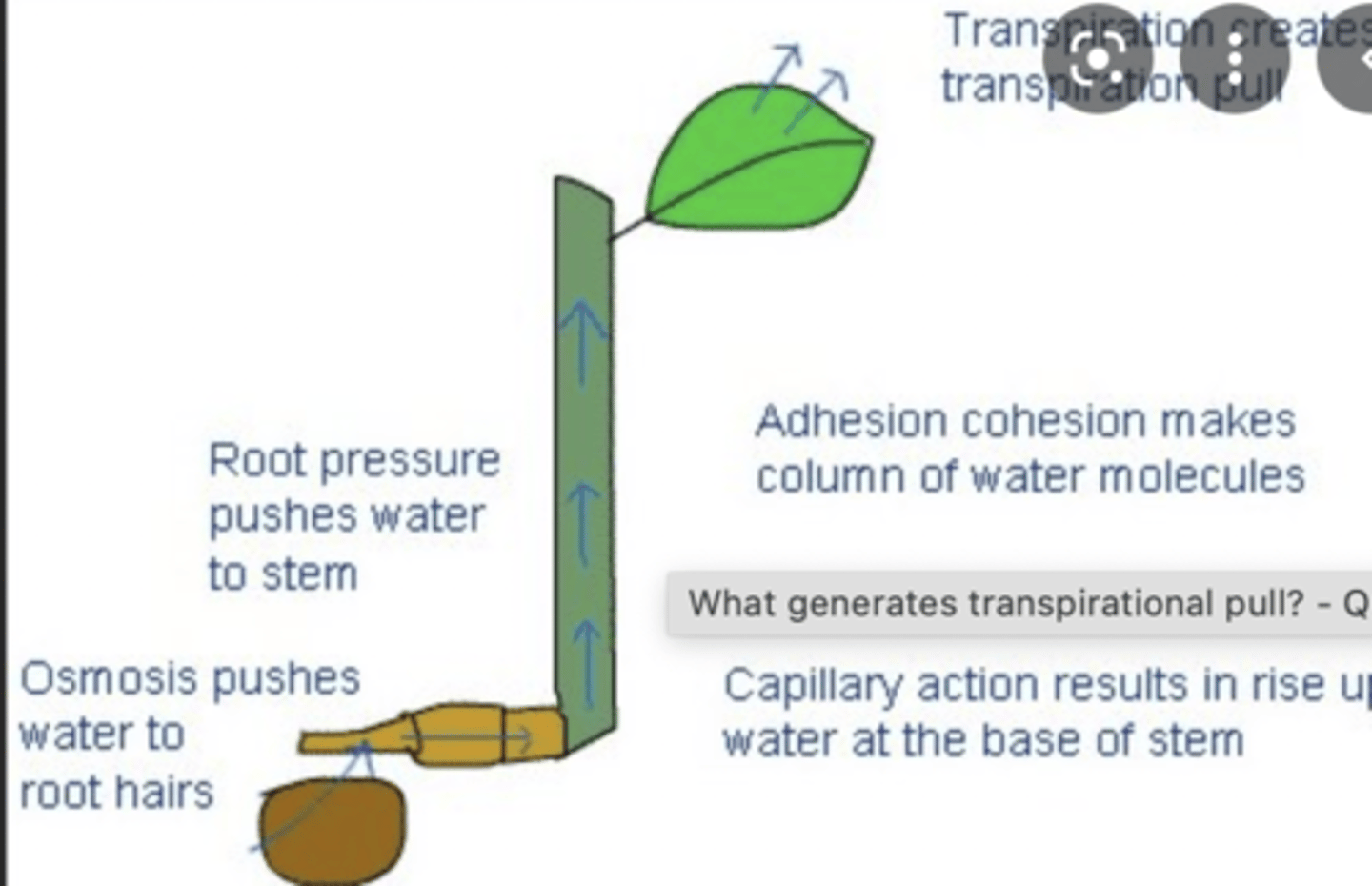
What type of plant does capillary action take place in (1 mark)
Small plants
Why is a plant leaf described as an organ (4 marks)
1. It is a collection of tissues
2. It is the site of photosynthesis
3. Adapted to carry out certain functions
4. E.g have epidermis and spongy mesophyll
How does the active pumping of minerals into root hair cells cause water to enter the cell (2 marks)
1. Maintains the low water potential gradient within the cell because the active pumping creates a high solute concentration
2. Water enters via osmosis
Name the less common place of the leaf where water is lost (1 mark)
Epidermis
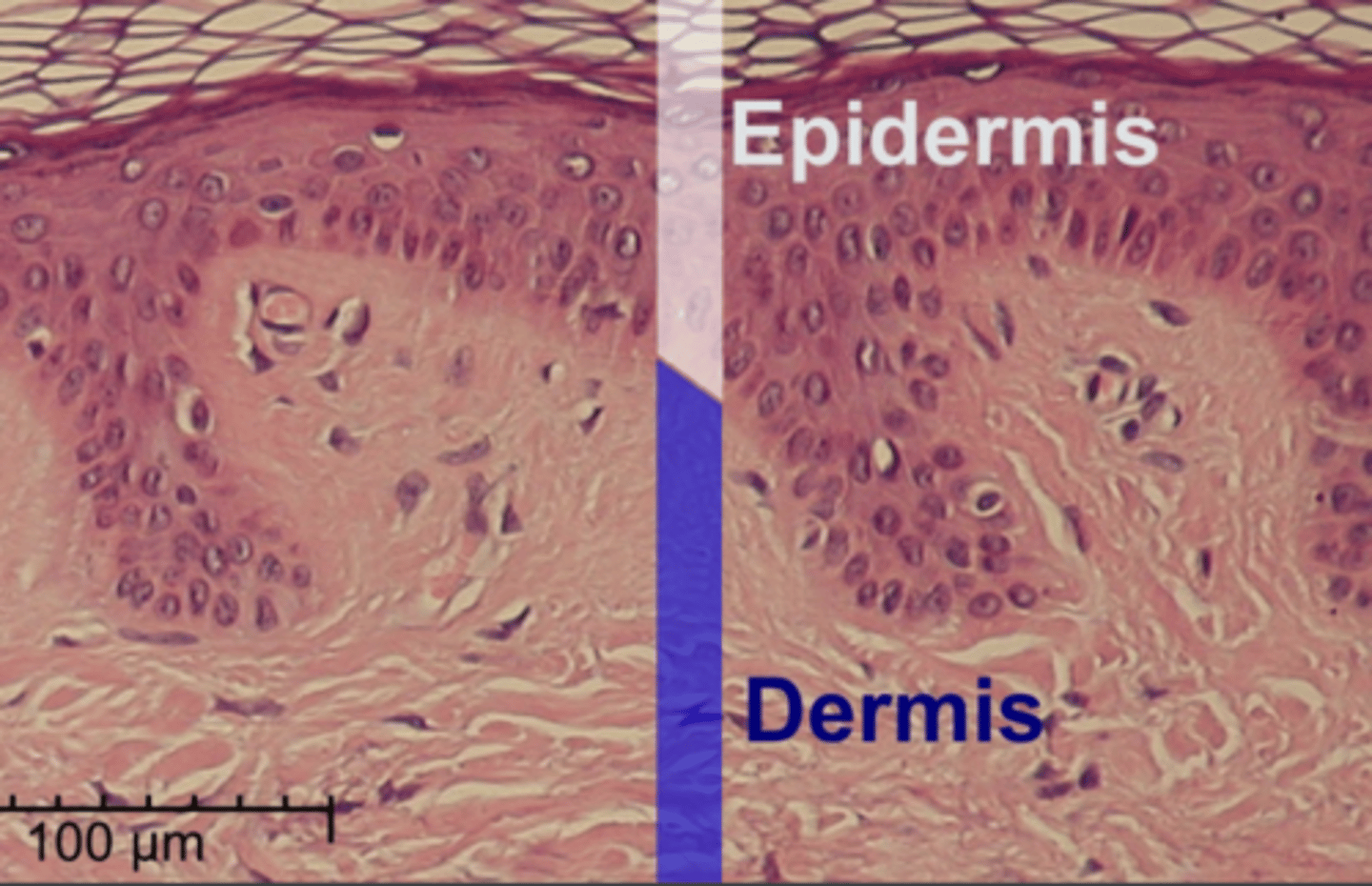
How are guard cells adapted to their role (2 marks)
1. Contain chloroplasts to provide ATP
2. Can change shape and bend
How does increased air movement increase the loss of water vapour form the leaves (2 marks)
1. Lowers the water potential by increasing the dryness around the stomata
2. Osmosis occurs when there is a higher water potential compared to a lower water potential
Why does light intensity increase the rate of transpiration (2 marks)
1. More stomata open
2. Increased rate of transpiration
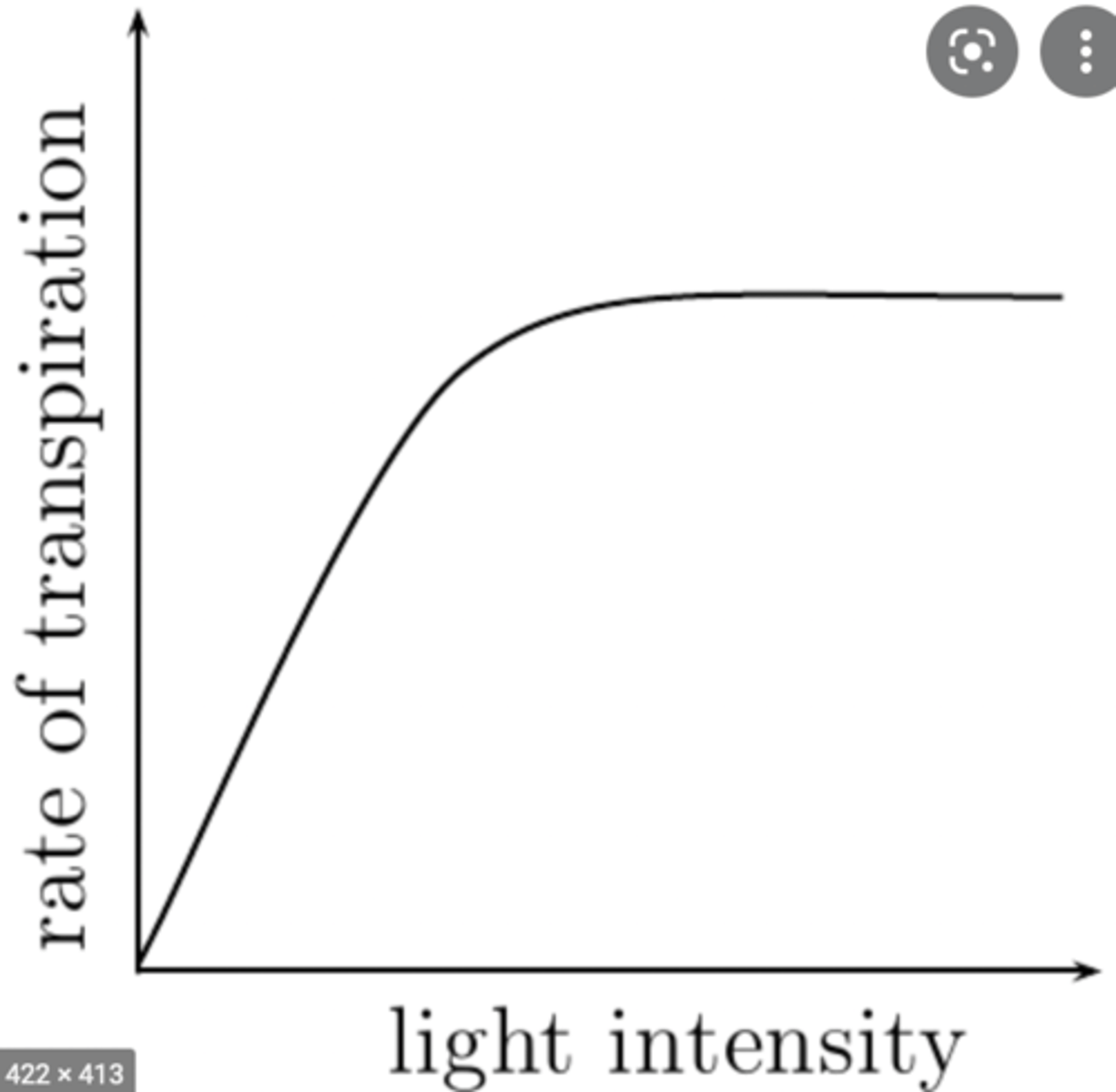
Define the term transpiration (2 marks)
Evaporation of water from the leaves via diffusion
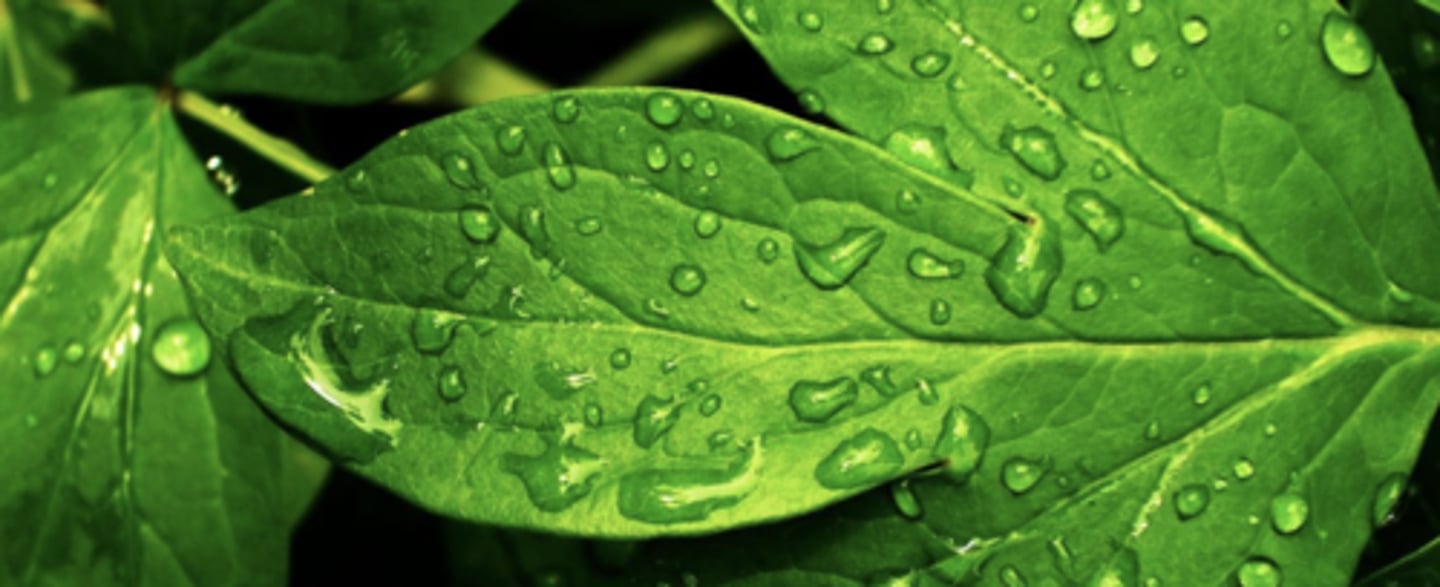
Explain why transpiration in plants cannot be avoided (3 marks)
1. Gas exchange takes place
2. Photosynthesis requires stomata to open for CO2 intake
3. Lower water potential outside, so water evaporates out
Explain how water travels up the stem and into the leaf of a doctor plant (6 marks)
1. Water travels in the xylem vessels
2. Down a water potential gradient
3. Lower water potential at leaf due to transpiration
4. This causes tension in xylem
5. Cohesion and adhesion pull water up
6. Continuous flow of water up the stem
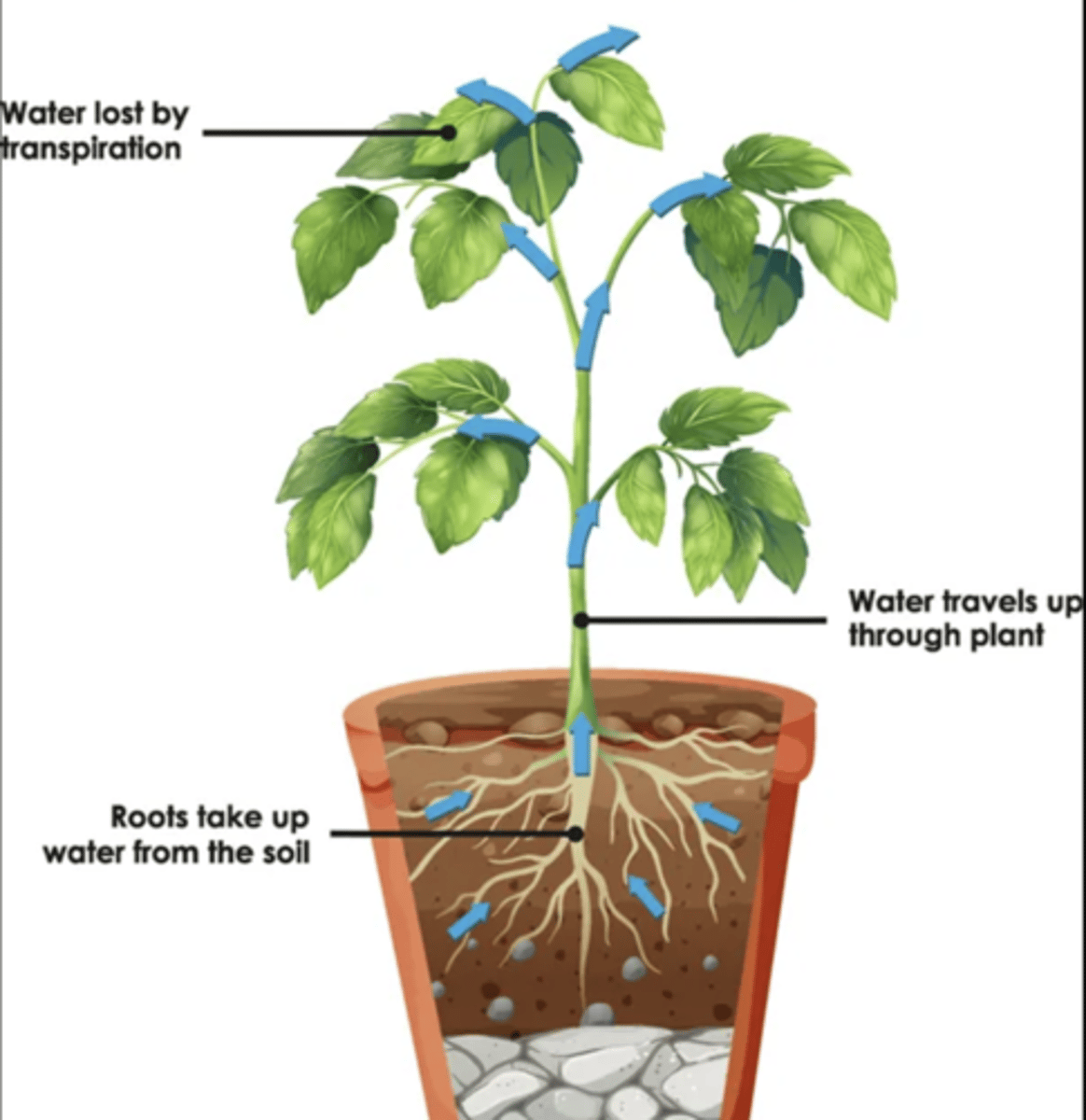
Explain how transpiration results in the movement of water up a plant (4 marks)
1. Hydrogen bonds cause cohesion and adhesion
2. Water travels through apoplast or symplast
3. Water potential gradient created between leaves and roots
state and explain two adaptations of xerophytes to reduce water loss (4 marks)
1. sunken stomata traps a layer of moisture which reduces water potential and decreases transpiration
2. hairs create a microclimate of humid air at leaf, which reduces the water potential and decreases transpiration
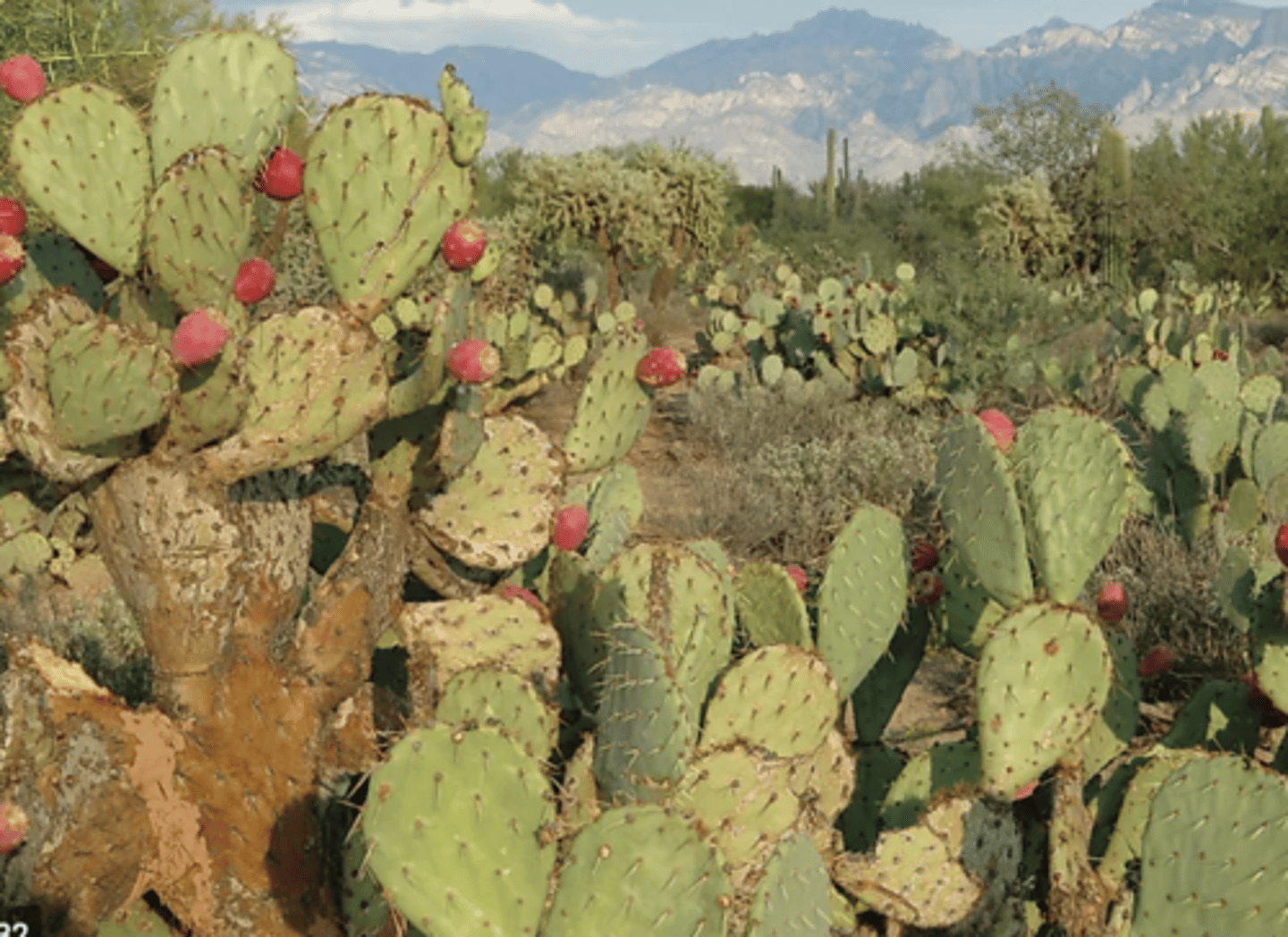
state and explain two adaptations of hydrophytes to survive in dry conditions (4 marks)
1. thin cuticle as they don't need to conserve water
2. wide flat leaves to increase light absorption
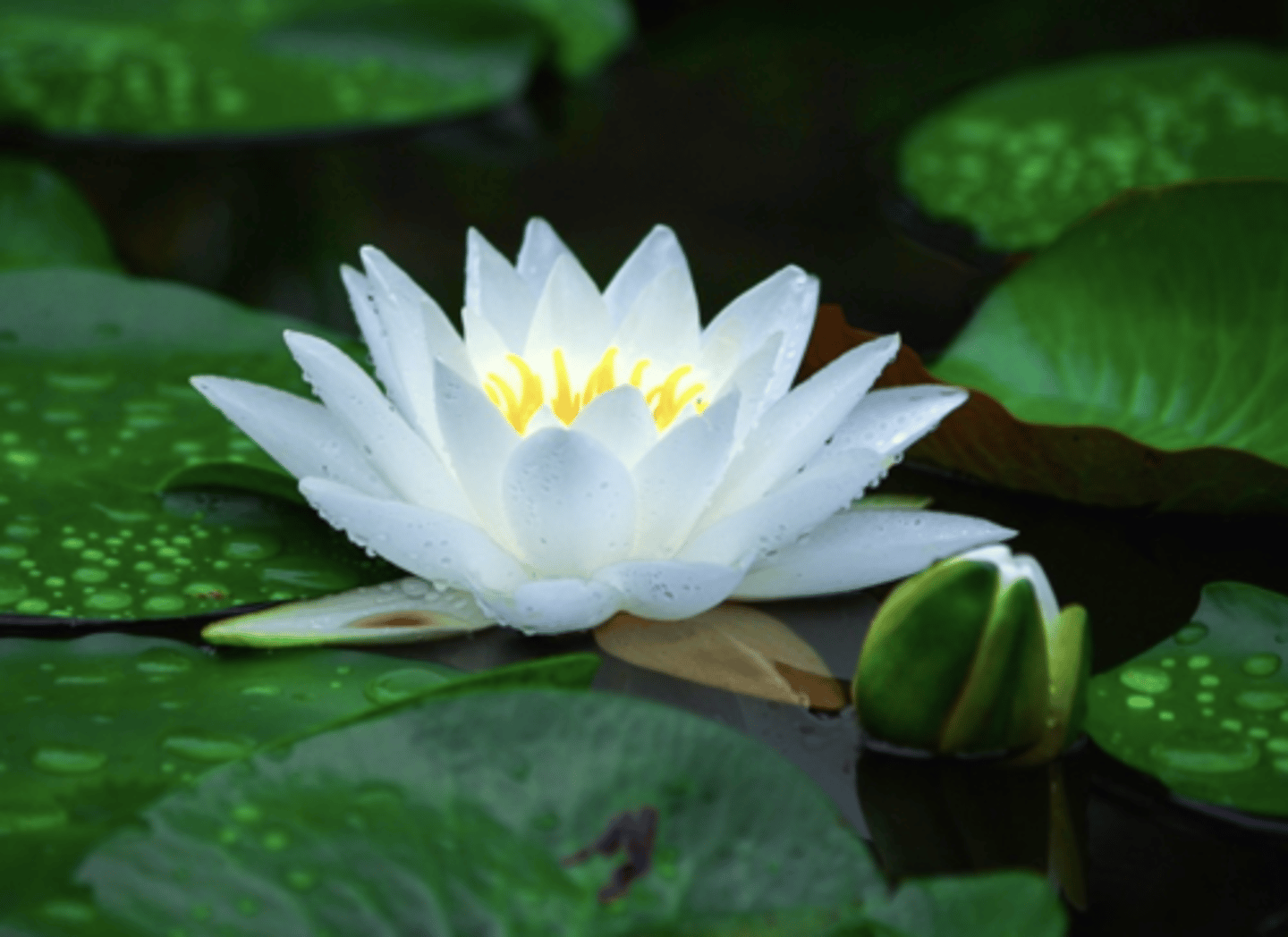
The rate of transpiration varies between different species of plant.
The rate of transpiration can be measured using a potometer.
Plan an investigation into the rate of transpiration in two species of plant that would allow valid data to be collected. (6 marks)
1. A photometer for both plants needs to be set up in the same conditions: temperature, humidity, wind speed
2. Movement of bubble should be measured for both species
3. Movement of bubble should be timed for both species
4. Record data at multiple time intervals
5. the distance the bubble moves reflects transpiration rate (assuming all water is lost through leaves)
6. The same person should time and read the position of bubble to make it valid
suggest and explain how the absence of vascular tissue might affect the size to which moss plants can grow (2 marks)
1. only use diffusion, no mass flow
2. diffusion is insufficient as it is too slow, so size remains small to compensate
explain how the mass flow of phloem sap occurs in plants with a vascular system (5 marks)
1. higher concentration of sucrose (phloem sap) in companion cells than sieve tube elements
2. sucrose diffuses through plasmodesmata into phloem
3. increased solute concentration causes low water potential
4. water enters phloem from xylem via osmosis, which creates turgor pressure
5. mass flow of assimilates to sink where the hydrostatic pressure is lower